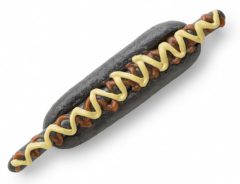Related Article
-

1500 Pikachus Invade Yokohama for Outbreak 2018 Summer Festival in Tokyo
-

Japanese Amusement Park Builds Gigantic 120-Meter Godzilla Structure
-

Gelato Pique teams up with Nintendo for Super Mario themed roomwear collection
-

Pokemon Go Players Are Revitalizing An Infamous Suicide Spot In Japan
-

Pokemon and Bandai reveal a sparkly highlight powder compact inspired by Diamond and Pearl
-

Forget Black Burgers, IKEA Japan Is Getting Black Ninja Hot Dogs



The addition of Magikarp manhole covers to the city of Ojiya in Niigata Prefecture means that ‘Poké Lids’ are continuing to take over Japan region by region.
Each Poké Lid features an original and unique design, and the newest edition to the ever growing list depicts the media franchise’ popular character, Magikarp. The characters chosen for each area’s Poké Lids often hint at cultural or historical elements of the region, with the Magikarp manhole covers highlighting Ojiya City’s historical contributions to the development of the Koi fish.
The fish were first bred more than 200 years ago in the then village of Ojiya, as a food source that could survive through the winter. At first they were viewed as just that; an essential food source that could be prepared year round, but over time their vibrant colours and slender figure led to the appreciation of the rare beauty and artistic appeal of the Koi. It wasn’t long before the Koi fish became the treasured pets of Japanese nobility, and began to appear amongst some of the country's most popular and important cultural properties.
Today, the Koi fish is known throughout the world as a symbol of Japanese beauty and grace. However, not too many know about the fish’s humble origins. It is hoped that the installation of the Magikarp Poké Lids will bring about intrigue and lead to a tourism bloom in Ojiya City and Niigata prefecture.
The Poké Lids have already been installed in more than 130 locations nationwide, with the hope that they will motivate tourists to visit and explore their retrospective areas. In addition to providing a fun new lease of life to the area they are installed at, each Poké Lid also acts as a ‘Pokéstop’ location for avid fans of the augmented reality smartphone game, Pokémon Go.
Currently, the Magikarp manhole covers are limited only to Ojiya City, but it is possible that more will appear across the whole of the Chubu region in the future.
You can keep an eye out of what Poké Lids will be appearing next and check out all the lids currently installed across Japan on the official Poké Lid Website.